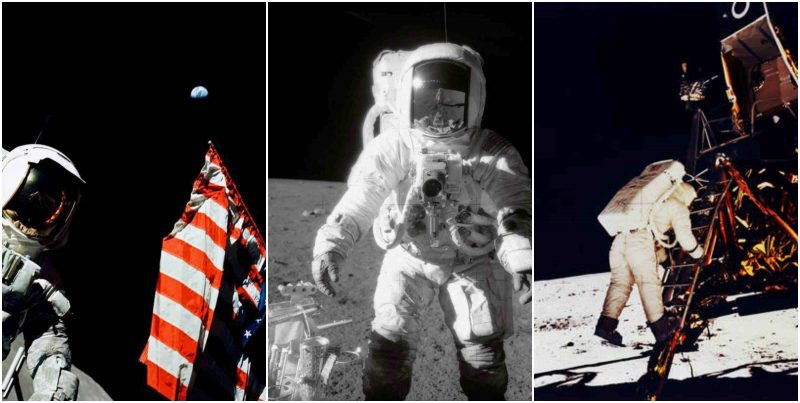One little step for man, a giant leap for mankind, were the words that Neil Armstrong proudly said as he became the first human being to land on the moon.
The United States’ Apollo 11 was the first manned mission to land on the Moon, on 20 July 1969.There have been six manned U.S. landings and numerous unmanned landings, with no soft landings happening from 22 August 1976 until 14 December 2013.
We put together a collection that documents other significant Appolo missions between 1969 and 1972.
All photos by NASA
Apollo 9
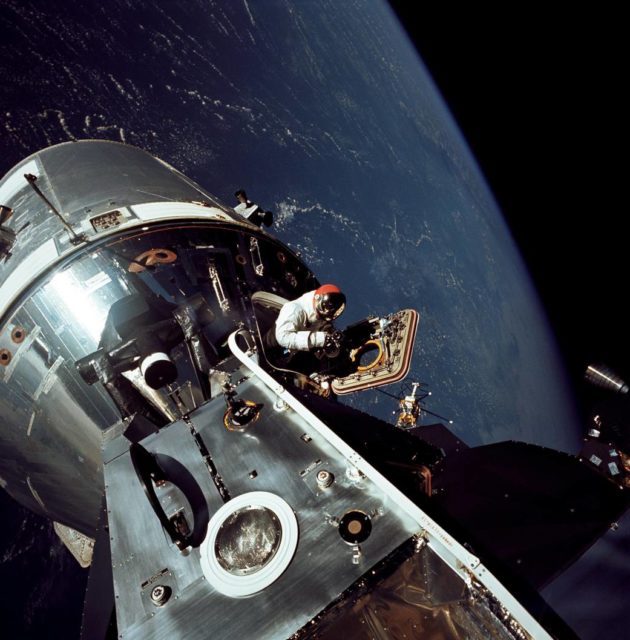
Apollo 9 was the third manned mission in the United States Apollo space program and the first flight of the Command/Service Module (CSM) with the Lunar Module (LM). Its three-person crew, consisting of Commander James McDivitt, Command Module Pilot David Scott, and Lunar Module Pilot Rusty Schweickart, spent ten days in low Earth orbit testing several aspects critical to landing on the Moon, including the LM engines, backpack life support systems, navigation systems, and docking maneuvers. The mission was the second manned launch of aSaturn V rocket.
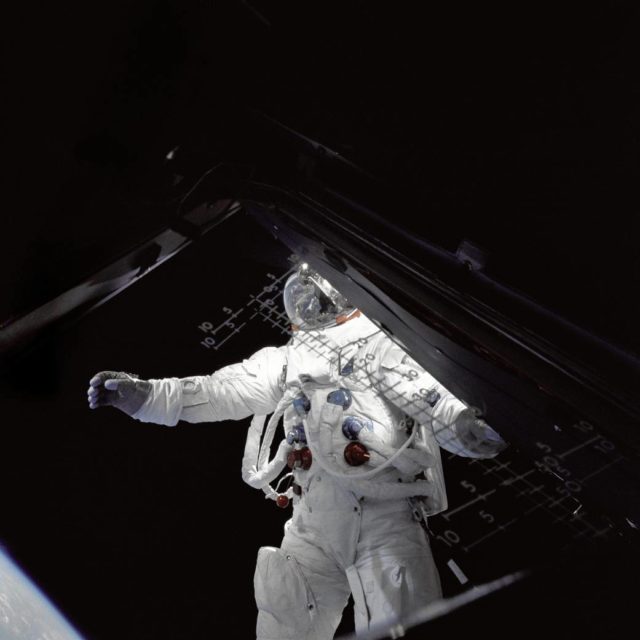
After launching on March 3, 1969, the crewmen performed the first manned flight of a LM, the first docking and extraction of a LM, two spacewalks (EVA), and the second docking of two manned spacecraft—two months after the Soviets performed a spacewalk crew transfer between Soyuz 4 and Soyuz 5. The mission proved the LM worthy of manned spaceflight. Further tests on the Apollo 10 mission would prepare the LM for its ultimate goal, landing on the Moon. They returned to Earth on March 13, 1969.
Apollo 11
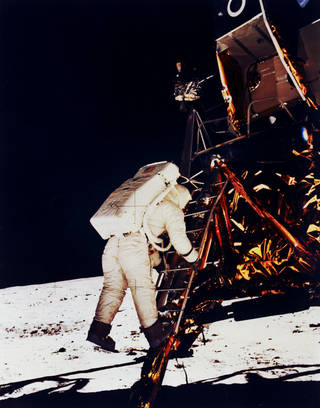
Apollo 11 was the first spaceflight that landed humans on the Moon. Americans Neil Armstrong and Buzz Aldrin landed on July 20, 1969, at 20:18 UTC (46 years ago). Armstrong became the first to step onto the lunar surface six hours later on July 21 at 02:56 UTC. Armstrong spent about two and a half hours outside the spacecraft, and together with Aldrin collected 47.5 pounds (21.5 kg) of lunar material for return to Earth. The third member of the mission, Michael Collins, piloted the command spacecraft alone in lunar orbit until Armstrong and Aldrin returned to it just under a day later for the trip back to Earth.
Apollo 12
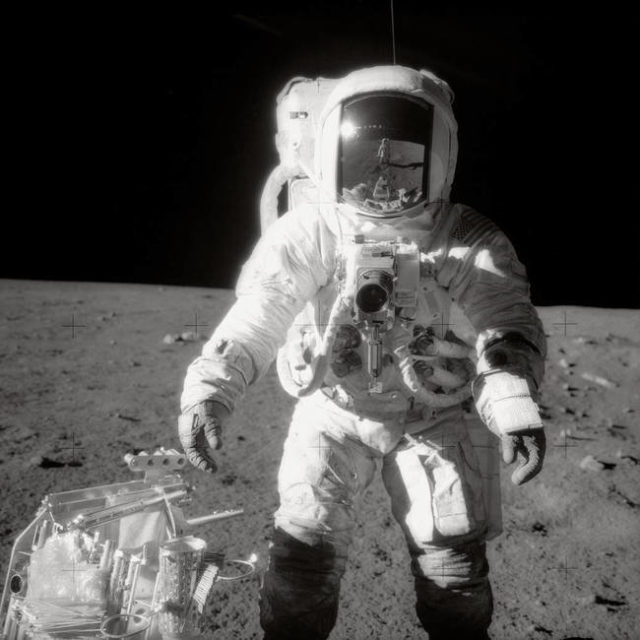
Apollo 12 was the sixth manned flight in the United States Apollo program and the second to land on the Moon (an H type mission). It was launched on November 14, 1969 from theKennedy Space Center, Florida, four months after Apollo 11. Mission commander Charles “Pete” Conrad and Lunar Module Pilot Alan L. Bean performed just over one day and seven hours of lunar surface activity while Command Module Pilot Richard F. Gordon remained in lunar orbit. The landing site for the mission was located in the southeastern portion of theOcean of Storms.
Unlike the first landing on Apollo 11, Conrad and Bean achieved a precise landing at their expected location, the site of the Surveyor 3 unmanned probe, which had landed on April 20, 1967. They carried the first color television camera to the lunar surface on an Apollo flight, but transmission was lost after Bean accidentally destroyed the camera by pointing it at the Sun. On one of two moonwalks, they visited the Surveyor and removed some parts for return to Earth. The mission ended on November 24 with a successful splashdown.
Apollo 15
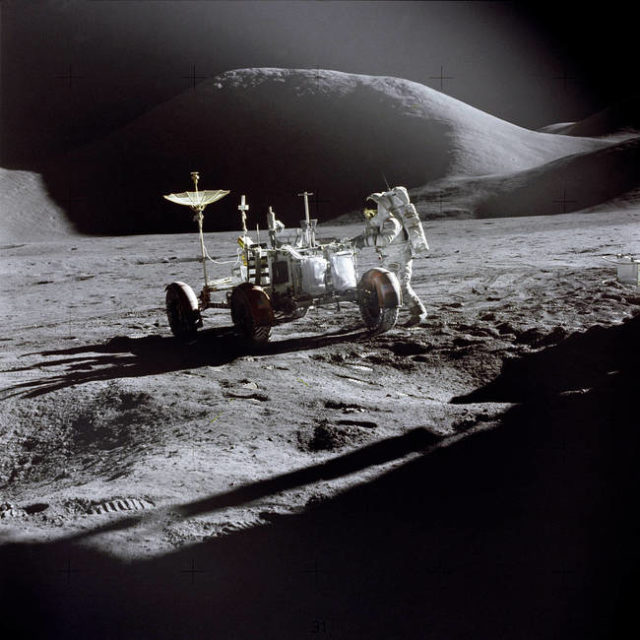
Apollo 15 was the ninth manned mission in the United States’ Apollo program, the fourth to land on the Moon, and the eighth successful manned mission. It was the first of what were termed “J missions”, long stays on the Moon, with a greater focus on science than had been possible on previous missions. It was also the first mission on which the Lunar Roving Vehicle was used.
The mission began on July 26, 1971, and ended on August 7. At the time, NASA called it the most successful manned flight ever achieved
Apollo 16
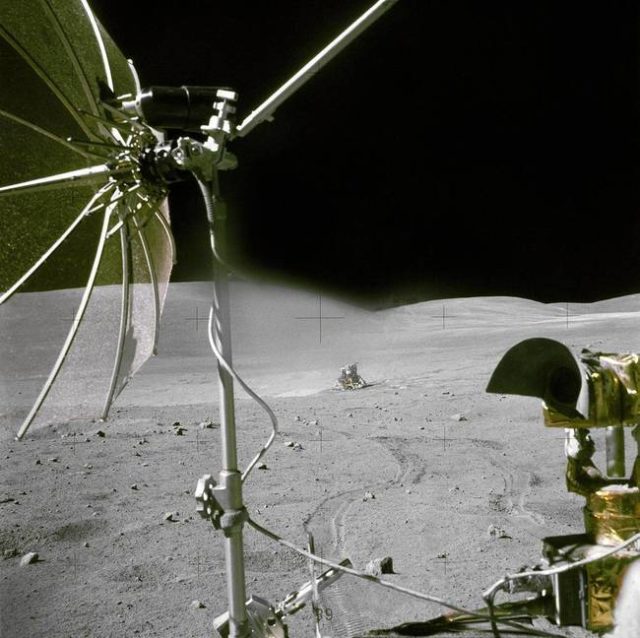
Apollo 16 was the tenth manned mission in the United States Apollo space program, the fifth and penultimate to land on the Moon and the first to land in the lunar highlands. The second of the so-called “J missions,” it was crewed by Commander John Young, Lunar Module Pilot Charles Duke and Command Module Pilot Ken Mattingly. Launched from the Kennedy Space Center in Florida at 12:54 PM EST on April 16, 1972, the mission lasted 11 days, 1 hour, and 51 minutes, and concluded at 2:45 PM EST on April 27.
Apollo 17
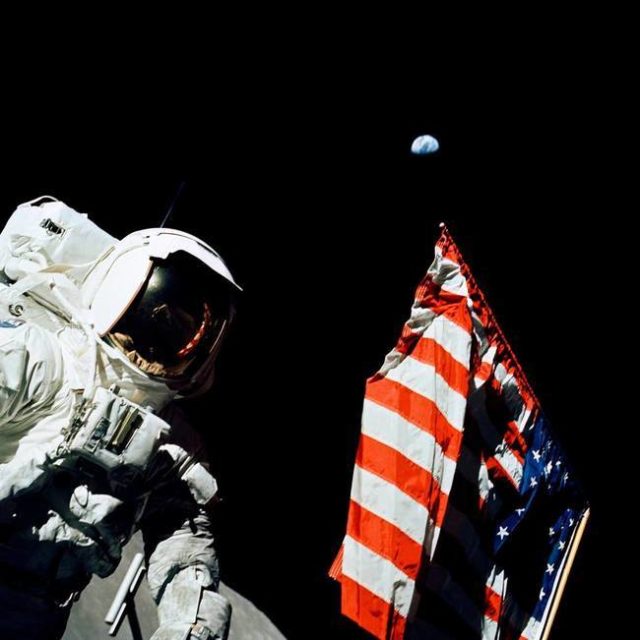
Apollo 17 was the final mission of NASA’s Apollo program, the enterprise that landed the first humans on the Moon. Launched at 12:33 am Eastern Standard Time (EST) on December 7, 1972, with a crew made up of Commander Eugene Cernan, Command Module Pilot Ronald Evans, and Lunar Module Pilot Harrison Schmitt, it was the last use of Apollo hardware for its original purpose; after Apollo 17, extra Apollo spacecraft were used in the Skylab and Apollo–Soyuz programs.
Apollo 17 was the first night launch of a U.S. human spaceflight and the final manned launch of a Saturn V rocket. It was a “J-type mission” which included three days on the lunar surface, extended scientific capability, and the third Lunar Roving Vehicle (LRV). While Evans remained in lunar orbit in the Command/Service Module (CSM), Cernan and Schmitt spent just over three days on the moon in the Taurus–Littrow valley and completed three moonwalks, taking lunar samples and deploying scientific instruments. Evans took scientific measurements and photographs from orbit using a Scientific Instruments Module mounted in the Service Module.
The landing site was chosen with the primary objectives of Apollo 17 in mind: to sample lunar highland material older than the impact that formed Mare Imbrium, and investigate the possibility of relatively new volcanic activity in the same area. Cernan, Evans and Schmitt returned to Earth on December 19 after a 12-day mission.
